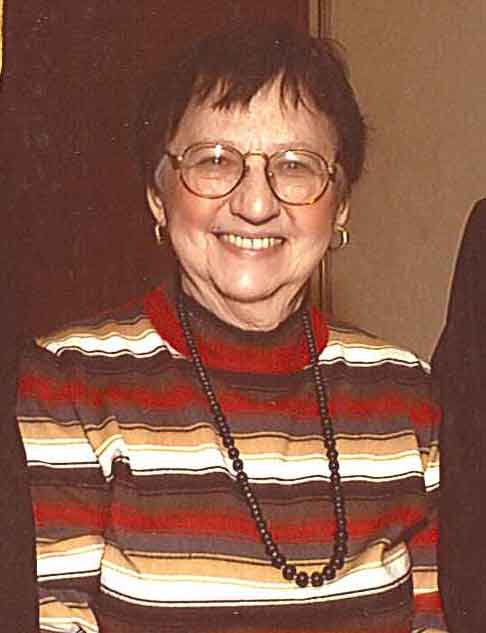Hilda Diamond - Former BME Administrator and Associate Head
Ms. Hilda Diamond was on the BME staff from its very beginning as the Biotechnology Program in 1967 until 2011, nine years after the establishment of the full-fledged Biomedical Engineering Department. Before she left, she sat down with Associate Head Conrad Zapanta to share her thoughts about the history and future of the Department.
Listen to Hilda describing how she started the TOC job fair with about 10 companies, which has now become one of the largest college job fairs in the Pittsburgh region, with over 200 companies spanned over two days.
Read an excerpt of the interview below.
How did BME get started?
I think it was the Biotechnology Program. It wasn’t called Biomed. And we were part of Civil. In Porter Hall, 123C. Dr. George Bugliarello—he was a civil engineer, and he was very interested in biomedical engineering. He was the founder, really, of the biomed program. He created a lot of connections at NIH and NSF. We had a lot of funding. We had training grants all the time, supported 10 students. And we were really scrambling to look for students to fill those vacancies.
There was another woman—she was the main secretary—a couple other part-time people, and myself. To type manuscripts—you know, when you send them to publication and they have to be on certain formatting. That’s what I did, mainly.
When did you start here at CMU?
1967. We had our own supermarket in Eastmont, Penn Hills—at the intersection of the old William Penn Highway and Jefferson Heights Road. The state constructed the turnpike, and they cut off our main access to our store, so we eventually sold the building because it really cut into our business. I needed a job and I applied everywhere, and they called me at Carnegie Mellon. They called me in to do part-time stenographic work at BME, and that’s how I got into Biomed.
How did your position within the department change?
Well, when Jane [the secretary] left, there was no one to do the administrative work. They just asked me if I would do that, and so I started to do the administrative part of the program. You know, submitting proposals and doing the appointments and so on.
What about your work with SWE (Society of Women Engineers)?
Well, I had a couple things that I started. What happened was I happened to see Dr. Jordan [former BME Director] one day on the Cut when he was the Dean. And he said, just very casually, "I would like you to take over being the advisor to the Society of Women Engineers." And I said, "Okay," and that was that. That must have been around 1980.
How about other initiatives that you started?
Engineering Your Future [a summer workshop for female and minority high school students] was a two-week summer program. That was hard to put together because the schools weren't very cooperative. To get the money, I met with the head of the Grable Foundation. I went downtown. She was very interested and said that they would support the program if we put it together.
Then I had a job trying to get the schools to cooperate. I went down to the Board of Education and met with them so that they would light a fire under their counselors, and we finally got that going, and I met with the faculty here. I had women faculty from Civil Engineering and Mechanical Engineering. Cristina Amon was really interested, and Susan Finger from Civil. That was a very successful program. It defined to the girls what you do if you elect to take Chemical Engineering or Mechanical or whatever.
What are your thoughts on the additional major then and now?
I think it's more advantageous to the student to have a joint degree. Because I can see the drug companies that come in to hire our students, they still want that ChemE background, that ChemE degree. I think the dual degree is better than a standalone. They can do everything that they can do with the standalone but more.
Listen to Hilda telling a horror story that happened some 40 years ago.
